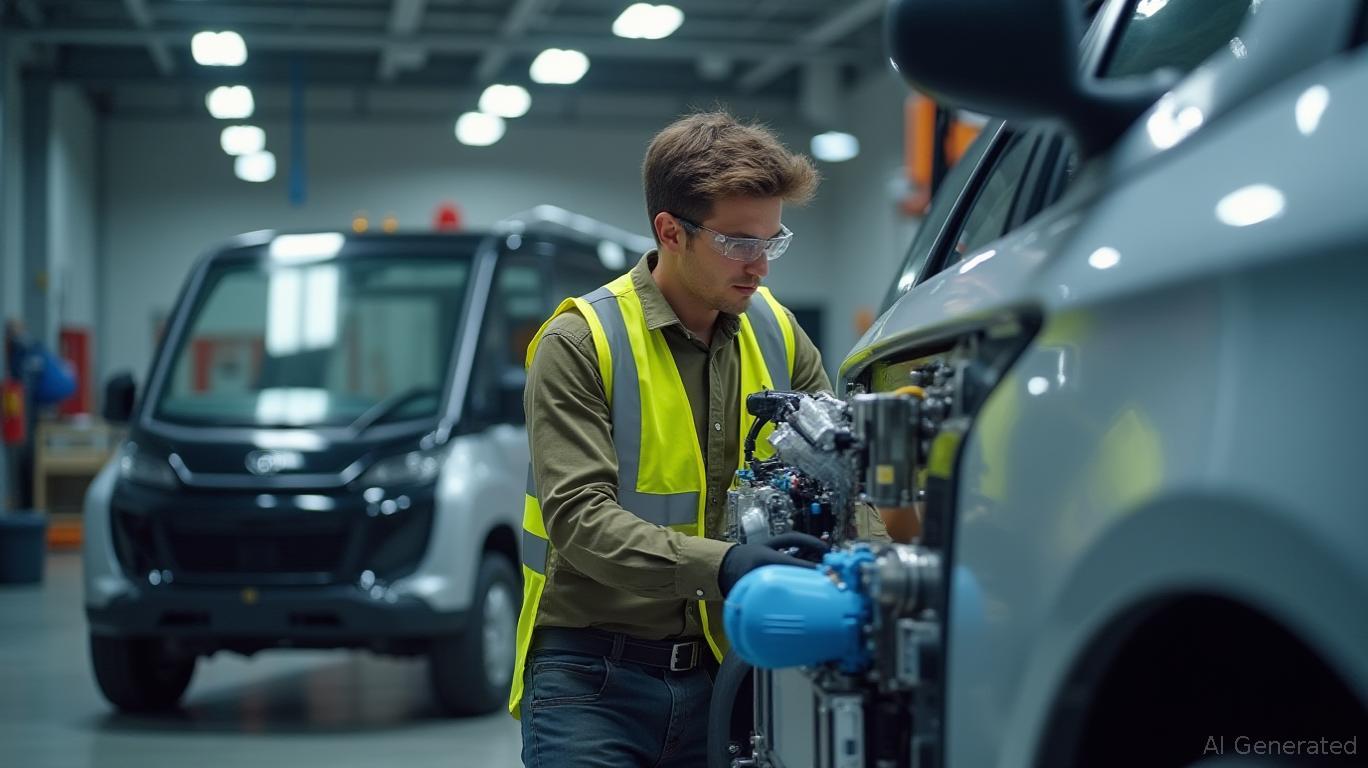BorgWarner's Strategic Pivot to eMobility Powers Growth Amid EV Transition
BorgWarner Inc. (NYSE: BWA) has positioned itself as a key player in the global shift to electric vehicles (EVs), with its Q2 2025 strategic moves underscoring a clear focus on accelerating growth in eMobility. By exiting non-core businesses, securing high-margin EV contracts, and showcasing advanced technologies, the company aims to capitalize on the EV boom while navigating industry headwinds. Here's why investors should pay close attention to this transition.

Financial Performance: Resilience Amid Industry Headwinds
BorgWarner's Q1 2025 results laid the groundwork for its EV-driven strategy. Despite a 2% decline in net sales to $3.515 billion due to lower vehicle production volumes, the company reported an adjusted operating margin of 10.0%, a 60-basis-point improvement year-over-year. This was driven by cost discipline and surging demand for its eProducts, which grew by 47% compared to 2024. Adjusted net earnings rose 8% to $1.11 per share, reflecting operational efficiency gains.
The company's full-year 2025 guidance is equally compelling: net sales are projected to reach $13.6–14.2 billion, with adjusted net earnings expected between $4.00 and $4.45 per share. While BorgWarner faces headwinds like tariff-related margin dilution and a 4%–2% decline in global vehicle production, its focus on high-growth EV segments is expected to deliver 200–400 basis points of outgrowth over market production.
Strategic Shifts: Exiting Non-Core Businesses, Entering Growth Markets
BorgWarner's pivot to eMobility is evident in its portfolio restructuring:
1. Exit of the Charging Business: The company plans to divest its Charging division by Q2 2025, eliminating $30 million in annual losses. This allows BorgWarner to concentrate resources on its core eMobility products, such as eMotors, inverters, and coolant heaters, which are critical to hybrid and battery-electric vehicles.
2. Cost Savings: Consolidating its North American Battery Systems business aims to generate $20 million in annual savings by 2026, freeing capital for R&D and new EV programs.
3. New Business Wins:
- A high-volume hybrid eMotor award with a major North American OEM for full-size trucks and SUVs (launching in 2028).
- A high-voltage coolant heater (HVCH) contract for plug-in hybrids (PHEVs) in North America (launching in 2027).
- Dual-clutch transmission (DCT) awards in China, extending production into the late 2020s.
These deals underscore BorgWarner's ability to secure long-term partnerships in fast-growing EV markets.
Technology Leadership: Showcasing Innovation at Key Events
BorgWarner's presence at industry events like the ACT Expo 2025 and Vienna Motor Symposium highlighted its advanced EV technologies:
- The iM-575 inverter-motor module, designed for Class 6–8 commercial EVs, reduces integration costs while delivering 1,829 Nm of torque.
- The Double-Sided Cooled (DSC) 800V SiC power module, which improves thermal efficiency and supports higher power density in EV inverters.
Such innovations position BorgWarner as a supplier of choice for automakers transitioning to EVs, particularly in commercial and premium vehicle segments.
Risks and Challenges
Despite its strategic moves, BorgWarner faces hurdles:
- Market Competition: Rivals like Continental AG and Denso are aggressively expanding their EV offerings, potentially pressuring margins.
- Tariff and Currency Risks: Trade tensions and currency fluctuations (e.g., a weaker Euro) could impact profitability, as noted in its guidance.
- Execution Risks: Successfully exiting the Charging business and integrating new EV programs requires flawless execution.
Investment Thesis: Buy for EV Leadership Exposure
BorgWarner's shift to eMobility aligns with the $500 billion EV supply chain market opportunity expected by 2030. Key catalysts for investors include:
1. Q2 2025 Earnings Call (July 31): Expected to confirm margin resilience and provide clarity on new contract ramp-up timelines.
2. Free Cash Flow Stability: The company aims for $650–750 million in free cash flow for 2025, supporting shareholder returns.
3. Sustainability Commitments: With 87% of 2023 revenue tied to EV and emissions-reducing products, BorgWarner is well-positioned to benefit from stricter global emissions standards.
At a current price of $35.70 (as of June 19, 2025), BorgWarner trades at 8.5x forward EV/EBITDA, a discount to its EV peers. Analysts project a $37.73 price target, with a “Moderate Buy” consensus rating.
Conclusion
BorgWarner's strategic pivot to eMobility is more than a response to industry trends—it's a deliberate move to dominate a $500 billion market. While near-term risks like tariffs and competition loom, the company's cost discipline, new contracts, and technological edge make it a compelling buy for investors seeking exposure to EV leadership. With its Q2 results and upcoming earnings call, BorgWarner has the potential to outperform as the EV transition accelerates.
Recommendation: Buy BorgWarner for long-term exposure to eMobility growth. Monitor the July 31 earnings call for execution updates and margin trends.

Comments
No comments yet